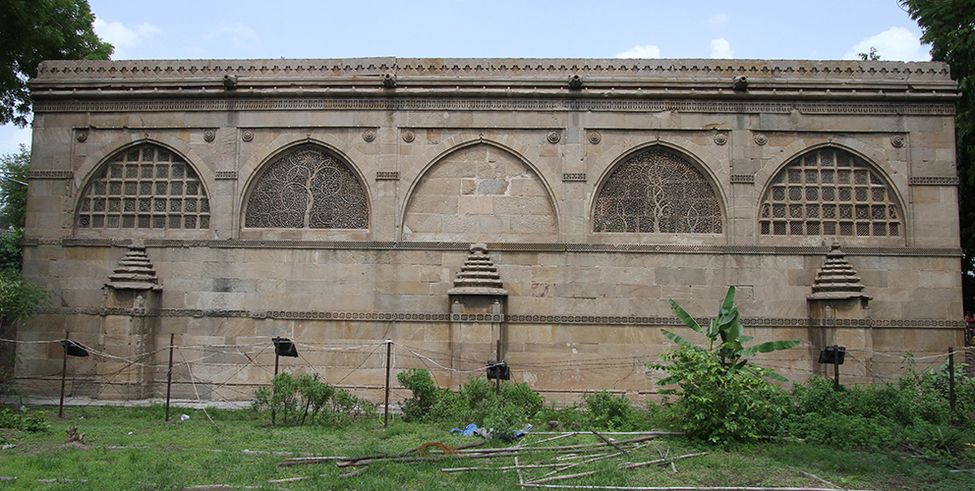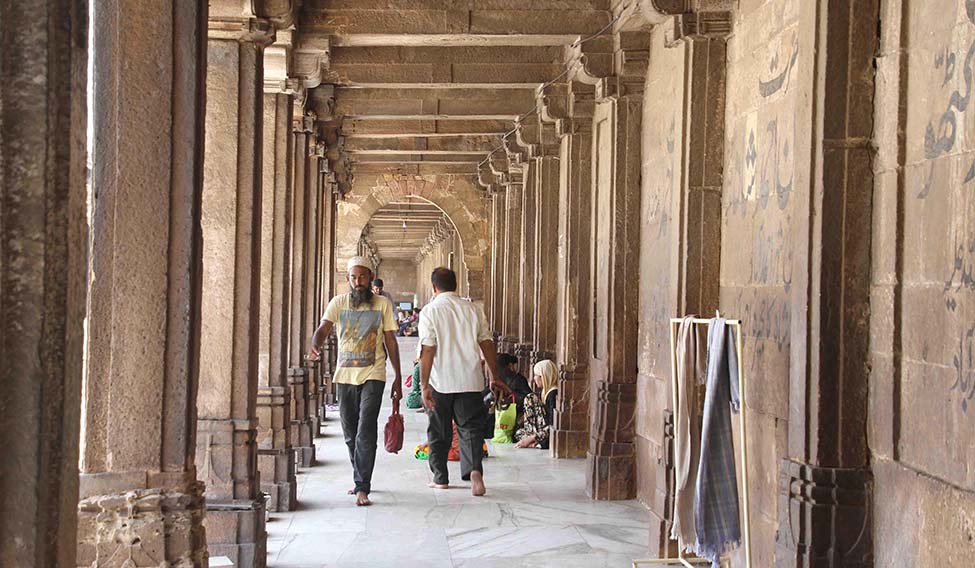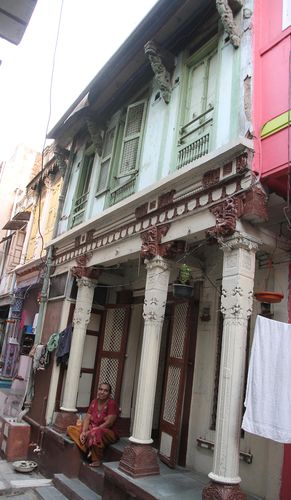Eleven bridges over the Sabarmati connect the old city with the new Ahmedabad. They connect two different worlds. While the bustling new city is the heart of the industrial powerhouse that Gujarat is, the walled city, founded by Ahmad Shah in the 15th century, is a delight for historians and architects.
No wonder architect Debashish Nayak wholeheartedly accepted an invitation from municipal commissioner Keshav Verma to be the adviser to the heritage programme of the Ahmedabad Municipal Corporation in 1996. The intention was to use Nayak’s expertise to preserve and restore the havelis and pols (clusters of houses) in the walled city. “It began with a view to make the old city liveable,” said Nayak. With the help of Archaeological Survey of India, Nayak and the corporation breathed new life into the city’s century-old structures.
Their efforts have been appreciated all along, but the final seal of approval came on July 8, when the World Heritage Committee inscribed the city in the UNESCO world heritage list. It is the first city in India to get the recognition, and now is in the league of cities like Paris and Cairo. Galle in Sri Lanka and Bhaktpur in Nepal are the other heritage cities in the subcontinent.
“It was not started with the aim of getting the world heritage tag,” said Nayak. It was in 2010, when the city celebrated 600 years of its foundation, that the corporation asked the Centre for Environment Planning and Technology (CEPT) to prepare a dossier so that the walled city could try for a heritage tag. A team headed by CEPT’s Prof R.J. Vasavada started working on it.
Said Prof Jigna Desai, area chair for conservation, CEPT: “A dossier outlines why a city is worthy of being world heritage. It outlines why it is a place important for the history of the world, what are the elements that should be conserved for the protection of that historic value, and how it plans to do it.”
 Rich heritage: Sidi Saiyyed Ni Jaali was built in the 16th century | Janak Patel
Rich heritage: Sidi Saiyyed Ni Jaali was built in the 16th century | Janak Patel
It took years for a team from CEPT to survey some 300 pols in the walled city. Desai said Vasavada was involved all along in the preparation of the dossier. The experts appointed by the World Heritage Committee inspected the place once, and the rest of the decision mostly depended on the dossier.
Municipal commissioners who succeeded Verma enthusiastically took up the responsibility in the past two decades. The incumbent, Mukesh Kumar, said the corporation had been helping and teaching people, through a special purpose vehicle, to restore their homes.
People have an important role to play in preserving the city’s heritage. “Tourists throng beautifully kept heritage cities. They remain clean and well-preserved because the people living there know their worth. Ahmedabadis will need to change their mindset and value this heritage before it becomes a truly memorable experience for visitors,” said dancer Mallika Sarabhai. “People who have been at the forefront of the conservation have done wonders. But it is no good having a beautiful haveli in a filthy pol. There is a lot to be done immediately. And we can do it.”
 Ahmad Shah built Jama Masjid, the first mosque in Ahmedabad, in 1424 | Janak Patel
Ahmad Shah built Jama Masjid, the first mosque in Ahmedabad, in 1424 | Janak Patel
While the Gujarat government is all set to celebrate the honour by organising a Heritage Festival, Nayak said there was a long way to go, as the status would be reviewed in a few months. The Heritage Conservation Committee plans to set up a small museum depicting housing pattern, layout plan of the pols, the water collection system and the use of public space. Said former IAS officer P.K. Ghosh, who is the chairman of the committee: “We can also think of having regular discussions on cultural aspects so as to redefine cultural traditions, organising workshops that can focus on how these old structures can be repaired.”
Lasting glory
Ahmad Shah I of the Gujarat Sultanate had several battles against the Rajput neighbours. Naturally, the Sultan built a fort soon after he identified the location for a new city. Bhadra Fort was built in 1411, the same year as Ahmedabad was founded. Originally there were a dozen gates and a hundred towers. Now only a few of them remain.
The Marathas, who ruled from the fort in the 18th century, made a Bhadra Kali temple inside the fort. The British brought a clock tower from London a century later.
On the east side of the fort is Teen Darwaza. Ahmad Shah built the gate in 1415, but it was made famous by his grandson Mahmud Begada, the mightiest of Gujarat Sultans. Begada quelled a rebellion, which vastly outnumbered his soldiers, at the egress.
At the centre of the old city is the Jama Masjid. Ahmad Shah built the elegant mosque in 1424 on the road from Teen Darwaza to Manek Chowk. Still the heart of Ahmedabad, Manek Chowk is the busiest shopping centre in the city during the day. At night it becomes a popular eatery. It also has the mausoleums of many sultans and ranis.
 A pol in Dariyapur | Janak Patel
A pol in Dariyapur | Janak Patel
The tallest minarets in Ahmedabad are that of Sidi Bashir Mosque. The mosque was ruined in a war with the Marathas in the 18th century, but the minarets, an architectural wonder, still stand. They are called shaking minarets—a gentle shake of one of them makes the other vibrate.
The last mosque built by the Gujarat Sultans is probably the most famous of them all. Sidi Saiyyed Ni Jaali was built in the 16th century and its intricately carved stone window is probably the best known symbol of the city. It is there in the logo of Indian Institute of Management Ahmedabad as well.
The Mughals conquered Gujarat in the 16th century. Their finest contribution to the city was Shahi Bagh Palace, built by Shah Jahan in the 17th century.
Pols, or clusters of houses, came up in Ahmedabad in the 18th century, when the Mughals and the Marathas ruled. “They are about complete neighbourhood, how people lived and how they continue to live,” said P.K. Ghosh, chairman of Heritage Conservation Committee. “Though with the passage of time there have been several changes in their homes.” Pols are self-sufficient, and have rainwater harvesting systems.
The British gave some 5,000 acres in Kalupur to the Swaminarayan sect to build its first temple in the early 1800s. The construction was completed in 1822. wAbout two decades later, Shet Hutheesing, a wealthy trader, initiated the construction of a Jain temple in the city. It was completed in 1848 by his wife. The temple, an architectural marvel, is dedicated to Dharmanatha, the fifteenth Tirthankara.
According to historian Rizwan Kadri, early 19th century Ahmedabad was an example of Hindu-Muslim unity. “Mahatma Gandhi’s Ahmedabad that played a major role in laying the foundation stone for the independence movement is very rich in heritage,” he said, citing the example of Manek Chowk, a historically important place from the times of the sultanate. “In early 19th century, traders observed a strike here.”
UNESCO must have taken into account Ahmedabad’s architectural wealth while deciding on the heritage status. But the history associated with these structures surely clinched the deal.







